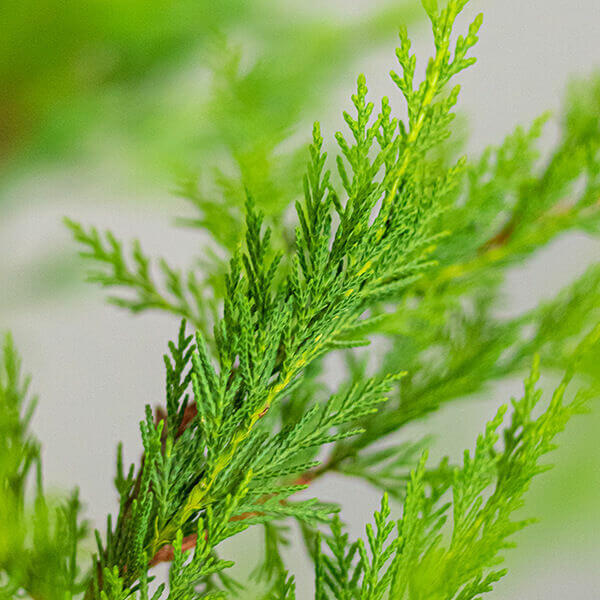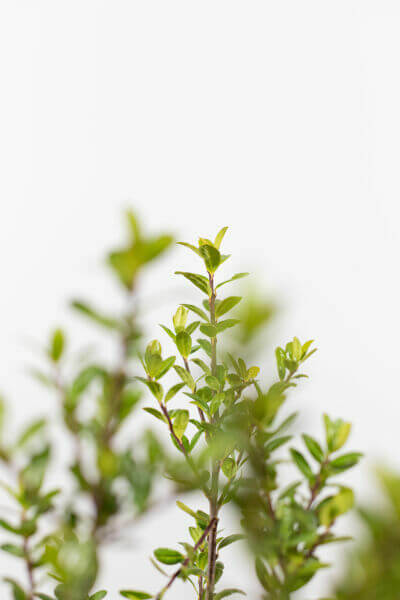Shade-tolerant Hedge Plants
Shade-tolerant Hedge Plants
Blog Article
Hedge Plants For Property Lines
Boost your garden's attraction with rich hedge ranges such as Yew (Taxus), Thuja, Laurel, Photinia, and Bamboo, celebrated for their structural stability and environmental advantages.
Yew and Thuja provide evergreen coverage and winter season resilience, while Laurel provides rapid growth and broad, aromatic leaves.
Photinia adds seasonal appeal with its lively red foliage, and Bamboo lends a low-maintenance, peaceful atmosphere.
These hedges enhance air quality, minimize sound, and create tranquil, private areas.
Proper planting, spacing, and maintenance guarantee energetic development and environmental consistency.
Check out how these lush varieties can raise your garden's appeal and wellness.
Key Takeaways
Transform Your Garden With Lush Hedge Varieties
- Select Yew for its thick, evergreen development and unparalleled longevity.
- Select Laurel for its quick development and broad leaves, making sure quick privacy.
- Choose Photinia for its vibrant seasonal foliage, which turns a striking dark red.
- Use Bamboo for a low-maintenance, winter-hardy hedge with visual appeal.
- Area plants 2-3 per meter and prune frequently for optimal growth and health.
Popular Hedge Plants
When transforming a garden with lush hedge varieties, it's important to consider popular hedge plants such as Yew, Thuja, Laurel, and Photinia due to their distinct qualities and advantages.
Yew (Taxus) is extremely esteemed for its durability and thick, green development, making it a prime option for withstanding landscapes.
Thuja is noted for its evergreen foliage and robust winter durability.
Photinia adds seasonal vibrancy with red leaves that darken over time, creating dynamic visual appeal.
Laurel offers quick development and aromatic, broad leaves, perfect for fast privacy.
Additionally, Bamboo is an excellent choice for atmosphere, using a low-maintenance, winter-hardy choice that improves the garden's aesthetic with its elegant, swaying walking canes.
These choices deal with a range of horticultural needs and preferences.
Advantages of Garden Hedges
Garden hedges use a wide variety of advantages, making them a valuable addition to any landscape. These natural barriers are affordable to implement and provide substantial wind defense, improving air circulation and adding to noise decrease. The dense foliage of hedges like Thuja and Beech ensures personal privacy by obstructing presence, creating a peaceful and secluded environment.
Hedges likewise play an essential function in microclimate policy, providing a steady environment that fosters plant growth and minimizes temperature level fluctuations. Their intricate leaf structures filter contaminants, improving air quality and contributing to a much healthier garden ecosystem.
Additionally, hedges master noise decrease, absorbing and deflecting acoustic waves to lower ambient noise levels. This double performance of offering both visual and acoustic personal privacy boosts the general harmony and aesthetic appeal of any garden.
Planting and Upkeep Tips
For a successful hedge, precise preparation of the planting location is essential. Guarantee the soil has correct pH and drainage to support strong root development.
Area the plants appropriately for the picked species. Water the hedge regularly during its initial development stage, adjusting as needed with seasonal modifications.
Carry out a organized pest control and illness avoidance method, using chemical or organic treatments when needed. Frequently inspect for aphids, mites, and fungal infections.
Apply mulch to keep wetness and reduce weeds. Seasonal pruning promotes thick development and air circulation, important for plant health.
Following these guidelines will help you cultivate a dynamic, well-kept hedge that enhances the appeal of your garden.
Spacing and Trimming Guidelines
Spacing and Trimming Guidelines
Appropriate spacing and trimming are important for cultivating healthy, aesthetically appealing hedges. Sufficient spacing guarantees each plant receives sufficient nutrients, light, and airflow.
Follow these guidelines for optimum hedge upkeep:
- Spacing: Position hedge plants 2-3 plants per meter to motivate robust development.
- Pruning Strategies: Routine pruning is necessary for keeping wanted hedge height and shape. Cut brand-new growth in summertime and cut back older wood during winter.
- Seasonal Care: Change cutting schedules and approaches according to seasonal requirements to guarantee plant health.
- Hedge Height: Regularly monitor and trim to keep the wanted hedge height and accomplish uniform visual appeals.
Sticking to these steps will ensure your hedge grows, improving both the appeal and functionality of your garden.
Choosing the Right Hedge
Picking the Right Hedge
Choosing the suitable hedge involves examining elements such as mature height, foliage density, and ecological durability. Successful hedge plant choice needs comprehending each species' growth characteristics and site-specific adaptability.
For example, Yew (Taxus) offers excellent longevity and dense growth, while Thuja is notable for its winter season durability. Furthermore, considering upkeep requirements is vital; fast-growing types like Laurel or Privet demand regular trimming, whereas low-maintenance options like Bamboo or Ivy may be preferable for those seeking very little maintenance.
Ecological factors such as soil type, light accessibility, and wetness conditions ought to likewise guide the choice process. This cautious technique guarantees the picked hedges will thrive, offering both functional and visual advantages to the garden landscape.
Delivery and Planting Recommendations
To ensure your hedge plants flourish, they need to be delivered by specialized couriers and planted immediately upon arrival.
Follow these essential actions for effective planting:
- Soil Preparation: Improve the soil with organic matter to improve drain and nutrient material.
- Planting Depth: Create a trench twice the width and equal to the depth of the root ball.
- Watering Methods: Water completely after planting, keeping the soil regularly moist but not saturated.
- Mulching: Use a layer of mulch to maintain wetness and suppress weeds.
Customer Support and Service
Provided the important function of prompt help in horticultural pursuits, our customer support team is readily available six days a week through telephone, email, and social media to offer professional recommendations and quickly attend to any issues. Their devotion to fast action times makes sure client satisfaction by dealing with queries associated with plant health, ideal planting techniques, and maintenance schedules.

----------------------
Within 24 hours
This extensive support group, enhanced by a stellar 9.3/ 10 customer score, highlights our commitment to improving the gardening experience for every single customer.
Regularly Asked Concerns
The Length Of Time Does It Consider Hedge Plants to Develop?
Hedge plants generally require one to 3 years to end up being completely developed, with the specific period differing by types and growing conditions.
Reliable care throughout this vital duration is vital for robust growth. Consistent watering, vigilant weed control, and appropriate fertilizer application are pivotal in promoting strong root development.
For instance, fast-growing types like Laurel might develop quicker, while slower-growing varieties such as Yew might take longer. Diligent maintenance speeds up the facility procedure, resulting in healthy and dense hedges.
What Are the Finest Hedge Plants for Personal Privacy?
The concern of the best hedge plants for privacy includes examining evergreen and deciduous choices.
Evergreen hedges like Thuja, Laurel, and Cypress offer year-round coverage, making sure constant personal privacy.
On the other hand, deciduous hedges such as Beech provide seasonal privacy, shedding leaves in cooler months.
Secret maintenance tips for personal privacy hedges include regular cutting, fertilizing in spring, read more and appropriate spacing-- typically 2 to 3 plants per meter.
In addition, consistent watering and diligent weed elimination are essential for promoting healthy, dense development.
Can Hedge Plants Draw In Wildlife to My Garden?
Yes, hedge plants can attract wildlife to your garden by supplying essential benefits like shelter, food, and nesting websites, consequently improving regional biodiversity. Yew, holly, and laurel are exceptional for attracting birds, while ivy supports a range of insects.
Nevertheless, it's important to keep in mind that there are some disadvantages, such as increased upkeep to manage insects and regular maintenance. Carefully choosing and maintaining hedge varieties can assist balance these disadvantages and advantages, ultimately promoting a sustainable and dynamic environment in your garden.
Exist Any Flowering Hedge Plants Available?
Yes, there are flowering hedge plants readily available that can enhance the appeal of your garden.
For instance, Elaeagnus, also referred to as Olive Willow, produces aromatic white flowers in the fall, adding a touch of beauty.
Photinia, another popular option, showcases lively red leaves that mature into a rich green, producing a vibrant visual effect throughout the seasons.
To ensure these plants prosper, it's necessary to practice appropriate pruning techniques and seasonal upkeep, such as cutting new growth in the summertime and cutting down in the winter season.
These procedures will help maintain the health and aesthetic appeal of your flowering hedges.
How Do I Avoid Insects in My Hedge Plants?
To avoid bugs in hedge plants, use natural bug control methods and maintain proper hedge care. Present advantageous bugs like ladybugs, which take advantage of hazardous bugs, to develop a well balanced environment.
Frequently check your hedges for indications of problem and without delay get rid of any afflicted parts to avoid the spread. Make sure the health of your hedges by using balanced fertilizers and offering sufficient water.
Use mulching to keep soil moisture and proper spacing to reduce plant stress and promote robust development. These practices jointly help in reducing pest issues and keeping a healthy hedge.
Conclusion
In essence, picking the best hedge varieties such as Yew, Thuja, and Laurel can transform any garden into a tranquil sanctuary. These plants offer year-round greenery, boost visual appeal, and offer practical advantages like sound reduction and wind protection.
Correct planting methods, accurate spacing, constant watering, and seasonal trimming are vital for optimum growth.
Reputable delivery services and skilled client support make sure a seamless experience from purchase to planting, making it easier than ever to elevate your outdoor area.
Garden hedges offer a plethora of benefits, making them an important addition to any landscape. These natural barriers are economical to implement and supply considerable wind defense, improving air blood circulation and contributing to noise decrease. The dense foliage of hedges like Thuja and Beech makes sure privacy by blocking visibility, developing a serene and remote environment.

Pruning Strategies: Routine pruning is vital for maintaining desired hedge height and shape. Cut new growth in summer season and cut back older wood during winter.
Report this page